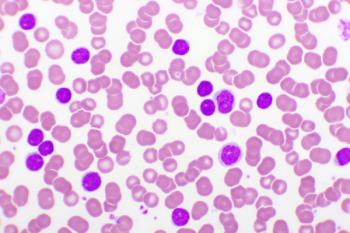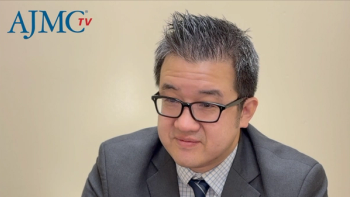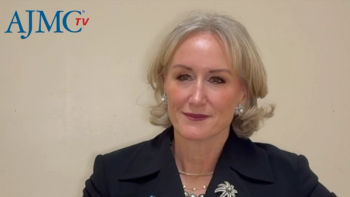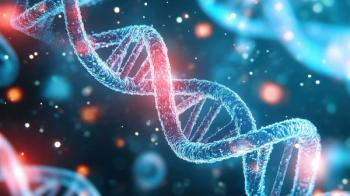
Navigating Hope, Risk, and the Unknown in a Changing DMD Treatment Landscape
Key Takeaways
- Gene therapies for DMD offer potential benefits but are not curative and carry risks, necessitating informed patient and caregiver perspectives.
- Early diagnosis through newborn screening raises questions about optimal timing for gene therapy administration and its long-term benefits.
As novel therapies, including
A panel of experts in DMD, including a patient advocate, discussed the evolving DMD treatment landscape, how gene therapies impact the paradigm, and how these changes affect patients. Barry J. Byrne, MD, PhD, associate chair of pediatrics and director of the Powell Gene Therapy Center at the University of Florida in Gainesville, chaired the session.
“We are in an era now where we have access to gene therapy products for Duchenne patients as young as 1 [year] and through adulthood, so we have to consider what the impact of disease progression is on expectations for response to treatment with gene therapy, and what the impact is of fibrosis and infiltration and loss of muscle mass,” Byrne said. “This, of course, is influenced by the time of recognition.” Although gene therapy may help slow disease progression, it is not a curative treatment.
Clinical signs of DMD can be flagged early if a patient sees a qualified evaluator, but newborn screening can identify presymptomatic patients. With approved gene therapies available for patients 4 years and older, the question of how early detection will impact the use of gene therapy in these patients remains.
Patient and Caregiver Perspectives on Gene Therapy
Patients and caregivers often don’t view gene therapies as cures for DMD, explained Mindy Cameron, a longtime patient advocate whose son has DMD. The risks of treatment can be unclear, she noted, although the risk-benefit ratio and therapy expectations vary by patient population.
“I believe the younger families are looking for the right time to dose to maximize benefit, I think the teenagers are looking to maintain function, and I think the older patients are probably looking to prolong life,” Cameron said. “I think everyone has their own expectations.” Regarding patients’ real-world experiences, Cameron noted that they are too varied and the data are not transparent enough. These factors contribute to fear and misinformation around gene therapies, she explained.
For patients, especially those in rural areas, there is a need for more education and awareness of gene therapy, added Aravindhan Veerapandiyan, MD, director of the Comprehensive Neuromuscular Program at Arkansas Children’s Hospital and an associate professor of pediatrics at the University of Arkansas for Medical Sciences in Little Rock. He added that some older patients may be hesitant to undergo treatment because they feel more comfortable sticking with what they know.
Byrne noted that the permanence of gene therapy can be difficult for providers to convey and for patients to accept. Kevin Flanigan, MD, the Robert F. and Edgar T. Wolfe Foundation Endowed Chair in Neuromuscular Research at Nationwide Children’s Hospital and professor of pediatrics and neurology at The Ohio State University College of Medicine in Columbus, echoed Cameron and Veerapandiyan’s sentiments but added that he does see patients who perceive gene therapy as a cure for DMD. Education on the fact that gene therapy is not curative remains important, he said.
Added Julie Parsons, MD, “There are variety of expectations, from ‘It is a cure, and my kid is going to be like the kid on social media who is up running around and is just fine,’ to the expectation or the concern that you’re getting a gene product that is changing the intrinsic makeup, and there’s suspicion around that. I think it really does depend on the patient population that you’re talking to.” She noted that she has seen caution among patients and consideration of alternative therapies that have been in use longer. Parsons is the Haberfeld Family Endowed Chair in Pediatric Neuromuscular Disorders at the University of Colorado School of Medicine and Children’s Hospital Colorado in Aurora.
Gene Therapy Timing in the Age of Early Diagnosis
Carmen Leon Astudillo, MD, a board-certified pediatric pulmonologist and clinical assistant professor at the University of Florida, added that come of the most challenging conversations surround nonambulatory patients who are eligible for treatment with delandistrogene moxeparvovec-rokl (Elevidys; Sarepta Therapeutics) following a label expansion in 2024.1 Still, in many cases, families are hesitant to move forward with gene therapy.
Cameron said she is glad the label was expanded, despite a lack of data in older patients. The expansion puts the decision in the patient’s hands, and some older patients are eager to try gene therapy, she said.
Parsons added, “I think looking at the other end of the spectrum, I’m not really sure about all this. If we end up having newborn screening, and we identify kids early, are we going to do gene therapy at the time of diagnosis, at age 2, at age 4? What’s the right age to say, particularly if we don’t know the durability and sustained benefit, when is the right time?” For providers, she said, it is important to determine the best practices for the interim period between a diagnosis at birth and when a patient is eligible for gene therapy.
Something to be cautious about with early administration is that there are numerous gene mutations that do not necessarily predict DMD phenotypes with certainty, Flanigan noted.
“One of my concerns with newborn screening is getting something that says, ‘This is going to be DMD,’ with no family history, no other patients to guide it,” Flanigan said. “I think it’s imperative that before we offer those therapies, we consider looking at a biopsy and seeing what’s actually going on. Is there dystrophin being expressed? There [are] lots of mutations that don’t fit that bill, but there are a lot of mutations where we… cannot say what the phenotype will be.”
Therapy Sequencing and Addressing Risks
Byrne posed the question to the panel of how the use of concomitant steroids should be approached with gene therapy. Veerapandiyan explained that a big question when a patient is taking vamorolone (Agamree; Santhera Pharmaceuticals) is whether they should stay on it and have prednisone added, or should they be switched to prednisone and then switched back? In his practice, he adds prednisone, he said, but at some practices, patients are switched completely. Although data are limited, these are the 2 main options, reinforcing the need for best practices, Byrne said. Givinostat (Duvyzat; ITF Therapeutics), a histone deacetylase inhibitor, is another therapy option in DMD, but it can potentially cause platelet issues, which should be considered when sequencing best practices are formed, Parsons added.
“I think that’s still very confusing, and I think people are being really cautious about that now as there have been more issues in dealing with platelets,” Parsons said. “There are other issues that are coming up—and again, as a community, we have to find out about these things.” She stressed the importance of sharing information about adverse events in real time so providers and the community are aware of the risks and can better determine best practices for therapy administration. Cameron added that patients also need data to inform decisions as more therapies become available.
An audience member brought up patients’ fears surrounding gene therapy, and Byrne reiterated the importance of sharing information about potential adverse events, both the known and unknown.
“I think the key here is setting that expectation up front, telling them that this is what we know so far, but there are so many unknowns that we don’t know,” Veerapandiyan said, noting that new adverse events have emerged in the commercial setting. “I always talk about a fatal event with every single patient that I’m [giving] gene therapy. Even though the clinical trial hasn’t shown anything, there’s always a possibility.” In his practice, patients must stay near the medical center for 2 to 3 months following gene therapy for close monitoring.
Flanigan emphasized the need for meaningful consent documents for gene therapy, and Byrne noted that the Powell Gene Therapy Center adopted practices from the transplant community in formulating a legal agreement outlining expectations from providers and patients and their families.
When creating memos for understanding and informed consent for therapy, Parsons said it is important to include a requirement for an autopsy in the event of death. Although death can be related to therapy, it also happens for other reasons, and understanding the cause of death is crucial in these cases, she said.
Veerapandiyan commented that despite the risks associated with gene therapy—even the risk of death, however rare—the potential efficacy is worth the risk to many patients with DMD. In closing, audience member Russell Butterfield, MD, PhD, an associate professor in the departments of neurology and pediatrics at the University of Utah in Salt Lake City, reiterated the need to talk to patients and families about the risks associated with therapy, as well as the patient’s perception of the risks.
"We don’t fully understand that risk, and it just has to be a good communication between families and us, and also the companies that hold some of these data,” Butterfield said.
Reference
FDA expands approval of gene therapy for patients with Duchenne muscular dystrophy. News release. FDA. June 20, 2024. Accessed May 9, 2025.
Newsletter
Stay ahead of policy, cost, and value—subscribe to AJMC for expert insights at the intersection of clinical care and health economics.









































